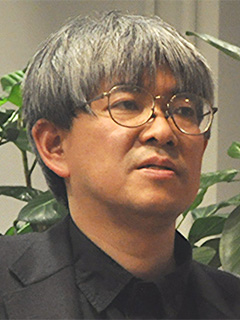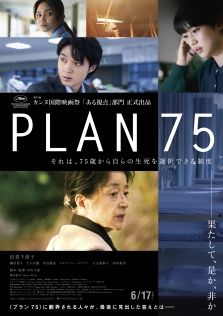Dramatic increase in Taiwanese and Southeast Asian co-productions. What is behind the latest trends?
International film co-productions have sharply increased, in part because the COVID-19 pandemic has passed. While the circumstances for doing an international co-production depend on the project, I’d like to highlight several trends that stand out in recent years.
One situation is projects that seek co-producers overseas because sufficient budget can’t be raised from domestic film studios and TV broadcasters. While Japanese film revenues are not bad at all, most hits are adaptations of popular comics or novels, or film version of TV series. One still often hears that having an original script keeps projects from even getting considered for funding. Hayakawa Chie’s PLAN 75 (2022) is a recent Japanese film that broke through those circumstances, but fundraising for this work ran into difficulties domestically and was completed precisely because there was investment from co-producers in France and the Philippines. It is conceivable that domestic film studios and TV broadcasters red-flagged the original script about a dystopia in which the government urges the elderly to euthanize themselves. The outcome was PLAN 75 earning box office receipts far exceeding expectations. Of course, the Special Mention award in the Camera d’Or competition at the Cannes Film Festival undoubtedly contributed to the film’s success, but the fact that older audiences packed theaters shows that the film uncovered an audience segment not anticipated by the domestic film industry. Sora Neo’s film Happyend (2024), which was selected for the Orizzonti section of the Venice International Film Festival and swept film festivals worldwide, is another project that couldn’t have been realized without funding from US and other international co-producers. This coming-of-age film takes place in a near-future high school where surveillance society has advanced, and the film’s fresh feeling was due in large part to auditioning actors with hardly any track record. The project itself might have secured funding from domestic film studios and TV broadcasters, but most likely with the requirement of casting established singers or pop stars. In addition, Igarashi Kohei’s Super Happy Forever (2024), which was selected to open the Giornate delgi Autori program at the Venice International Film Festival, and Kai Sayaka’s Adabana, which was screened at the Tokyo International Film Festival, were both French co-productions. The films were shot in Japan with original scripts and were realized with grants from the French government.
The second trend is the jump in Taiwanese co-productions. The Taiwanese government has been supportive of film productions, but mainly for domestic projects. However, the government body Taiwan Creative Content Agency (TAICCA) was established in 2019 and began proactively supporting international Taiwanese co-productions. Tsuta Tetsuichiro’s Black Ox (2024) is a unique work shot on black-and-white film about a man who lives with an ox in the mountains of Tokushima. Despite being shot almost entirely in Japan, the film secured TAICCA funding through casting Taiwanese film star Lee Kang-sheng in the lead. The film certainly doesn’t meet Japan’s current box office demands and would have been unthinkable without TAICCA’s involvement. Of course, TAICCA doesn’t just fund artistic films, and an example of a commercial project is 18x2 Beyond Youthful Days. Fujii Michihito was approached by a Taiwanese producer and shot the film in Japan and Taiwan, and it has been a box office success in Taiwan and Vietnam. Many projects are underway with the expectation of achieving similar success.
Another trend is the increase in Southeast Asian co-productions. Main examples are Last Shadow at First Light (2023) from Singaporean director Nicole Midori Woodford, who cast Nagase Masatoshi and Shirata Mihaya as leads and filmed on location in Rikuzentakata; and Diamonds in the Sand (2024) from Filipina director Janus Victoria, who cast Lily Franky in the lead. Also, Indonesian director Edwin’s Monster Pubrik Rambut, currently in post-production, is a Japan-Indonesian co-production that was shot on location in Indonesia but tapped Ashizawa Akiko for cinematography and Nagashima Hiroyuki for sound design. These films are underpinned by dramatic film industry growth and the emergence of talented young directors in Southeast Asian countries including Singapore and Indonesia, where film production previously had not yet flourished. We can hope for the production of diverse films through collaborations between Japanese filmmakers and Southeast Asian filmmakers.







